6 essentials of personal fall arrest systems
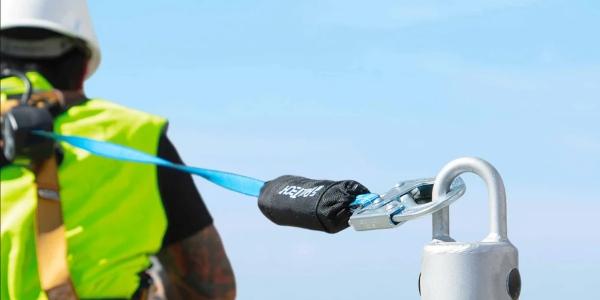
By WRYKER Construction Supply.
From harnesses to anchor points, mastering the essentials of a personal fall arrest system ensures roofing professionals are equipped with vital tools for every job site.
Ensuring roofing professionals' safety on construction sites requires a thorough grasp of fall protection equipment, with the Personal Fall Arrest System (PFAS) playing a pivotal role in preventing potential falls. Presented by WRYKER Construction Supply, this guide explores the integral components of a comprehensive PFAS and emphasizes their crucial role in upholding the safety and welfare of roofers.
1 - Harness
The foundation of any PFAS is the harness. It's essential to select the right type of harness based on specific job requirements. In the event of a fall, a harness distributes the impact forces across the body, reducing the risk of injury.
For applications in roofing, our safety team recommends that harness includes a dorsal D ring located around the shoulder blades. This is the ideal connection point for roofers to preserve the ability to work without obstruction while maintaining a secure connection to an anchor.
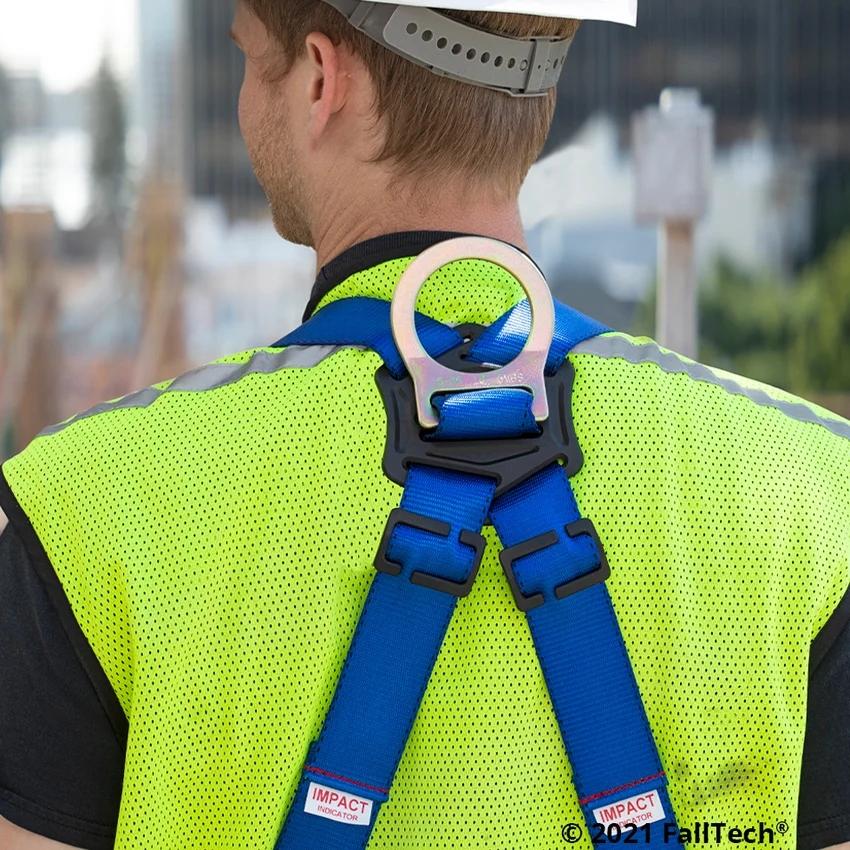
2 - Lanyard or self-retracting lifeline (SRL)
Connected to the harness, a lanyard or self-retracting lifeline is a critical component of every PFAS. It serves as the link between the harness and anchor point, providing necessary flexibility for movement while maintaining fall protection.
On August 1, 2023, a crucial update to ANSI standard Z359.14-2021 articulating new classifications for SRLs took effect. In the update, there was a departure from Class A and Class B designations. Now that the updated standard is in effect, SRLs fall into a new classification of either Class 1 or Class 2. Leading Edge (LE) SRLs are exclusively designated under Class 2.
Class 1 SRL: Anchor at or above dorsal d-ring
"Devices which shall be used only on overhead anchorages and shall be subjected to a maximum free fall of 2 feet (610 mm) or less, in practical application."
Class 2 SRL: Anchor above or below dorsal d-ring
Devices "intended for applications wherein overhead anchorages may not be available or feasible and which may, in practical application, be subjected to a free fall of no more than 6 feet (1.8m) over an edge."
When safety professionals select which type and class of SRL to use for a given situation, they must pay close attention to these new standards. Practically, there are many situations where a previously purchased SRL may no longer be compliant. Class 2 Retractables endure rigorous testing to qualify. The increased durability protects workers from severe injury, far outweighing the cost.
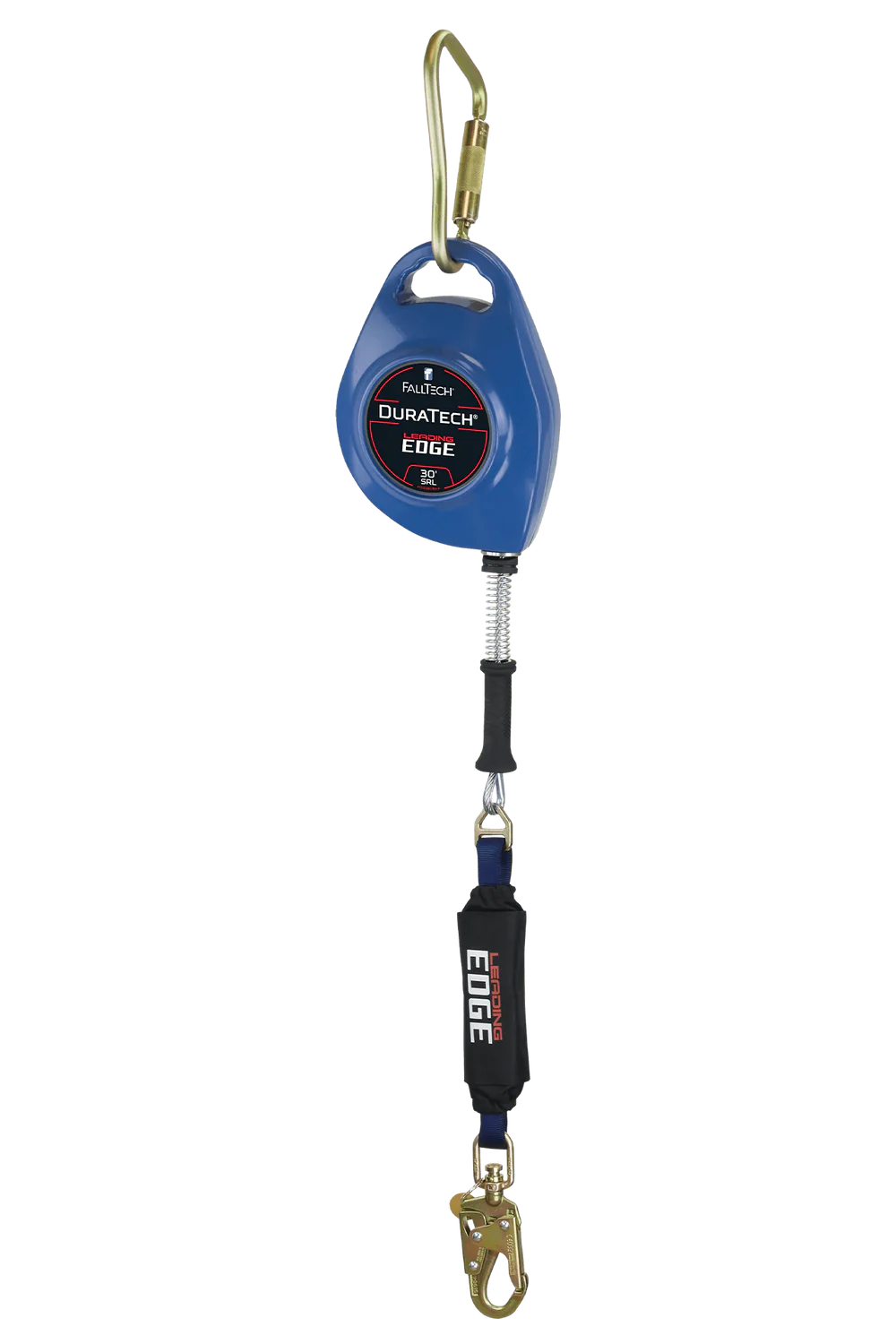
3 - Anchor point
An effective anchor point is key to the functionality of a PFAS. The anchor point must be securely attached to a stable structure capable of supporting the forces generated during a fall. Regular inspection and proper installation are imperative.
Roofers have a variety of options to choose from when it comes to anchor points; each jobsite will have unique specifications and requirements, making the correct choice an essential component of a safety professional's jobsite safety plan. Four common choices for anchor points in roofing are:
- Cross Arm Strap
- Butterfly Anchor
- Horizontal Beam Clamp Anchor
- Parapet Anchor
- Concrete Anchor
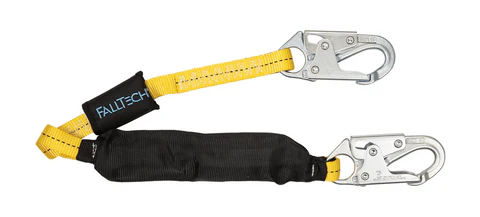
4 - Shock absorber or shock absorbing lanyard
Incorporating a shock absorber (shock pack) into the PFAS helps minimize the impact forces on the body during a fall. This crucial component adds an extra layer of protection, reducing the risk of injury and ensuring a safer fall arrest experience.
Some lanyards are designed with integrated shock absorption to account for fall arrest forces, while others are strictly designed for fall restraint. Lanyards only designed for restraint benefit from the addition of a shock absorber (shock pack) for complete PFAS systems. Our safety team recommends utilizing integrated shock absorption to remove the risk of a worker forgetting to install or inspect their shock pack.
In addition to shock packs, in the event of a fall, a trauma strap can be a crucial component to a truly functional PFAS. After a fall, there will be some duration of time where the worker is suspended, waiting to be rescued. A trauma strap is an additional device you can connect to your harness and release after a fall, allowing the worker to stand up instead of hanging in the harness with their full body weight held on the harness legs. A trauma strap can provide crucial hours of time before blood builds up in the legs that can lead to serious injury, up to loosing ones limbs.
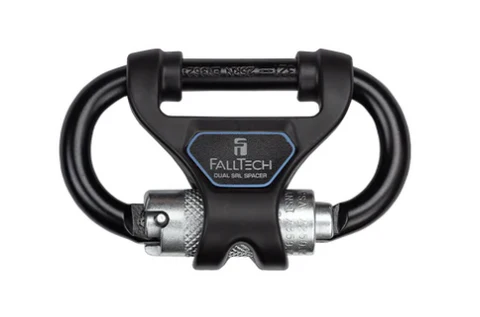
5 - Connectors and hardware
The connectors and hardware, including carabiners and D-rings, play a crucial role in maintaining the integrity of the PFAS. Regularly inspecting and ensuring the proper functioning of these components is vital for the overall effectiveness of the system.
It may go without saying for people accustomed to working at heights, but we will reiterate that any fall protection equipment must be designed and tested for fall protection applications to be appropriate for use in a PFAS. Untested devices like carabiners used for holding water bottles are NOT appropriate for any fall protection application under any circumstance.
6 - Training, certification and regulatory compliance
Proper training is paramount for using a PFAS correctly. Roofers should undergo comprehensive training programs to understand the specific components, proper usage, and maintenance requirements. Certifications can be required by employers to ensure that workers are equipped to use their PFAS safely.
Adhering to OSHA regulations is essential. The safety officer for every roofing project should have a comprehensive understanding of the guidelines set forth in 1926.502 and instruct their crew as needed to ensure a safe work environment. Subsection 1926.502(d) contains specific details about requirements for Personal Fall Arrest Systems.
After being deployed, all fall protection devices involved must be thoroughly inspected and confirmed to be free from damage by a qualified person before it they are put back into active use. Conducting work safely so workers can go home to their family at the end of the work day is always the top priority.
No job is so important and no service so urgent - that we cannot take time to perform our work safely.
- AT&T Bell System Safety Creed (1939)
Conclusion
A complete Personal Fall Arrest System is more than just a collection of equipment — it's a carefully integrated safety solution. A well-designed PFAS equips workers with a harness, lanyard or self-retracting lifeline, shock absorber, anchor points, connectors and hardware. This combination provides roofing professionals with the necessary tools to work at heights safely.
Our mission at WRYKER Construction Supply is to equip professionals for safe and effective work. Our product offerings are strategically built around enhanced worker safety and increased efficiency. We aim to elevate our customers commitment to safety by providing top quality equipment paired with exceptional customer service.
Original article source: WRYKER Construction Supply
Find OSHA-compliant products favored by workers here!
Learn more about WRYKER in their Coffee Shop directory or visit www.wryker.com.













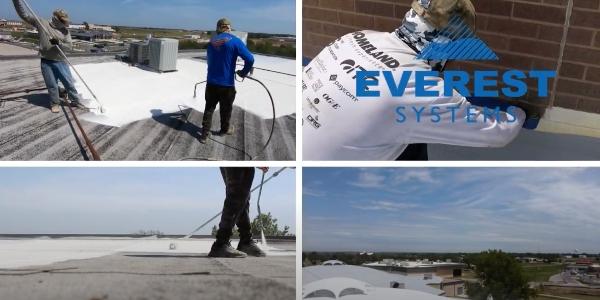
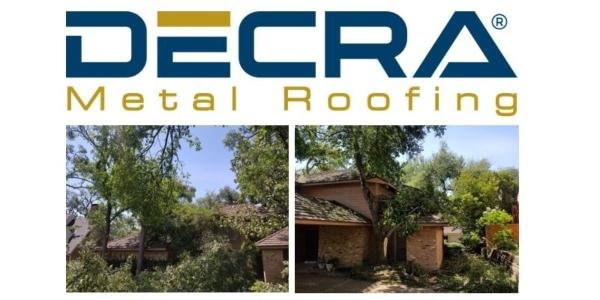
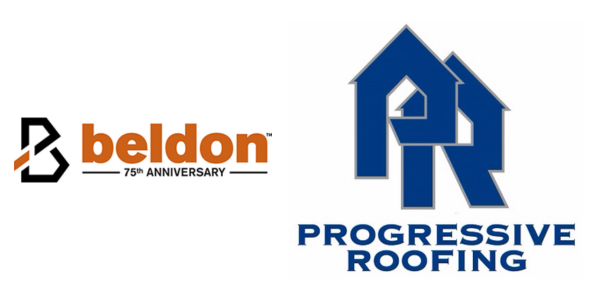






Comments
Leave a Reply
Have an account? Login to leave a comment!
Sign In